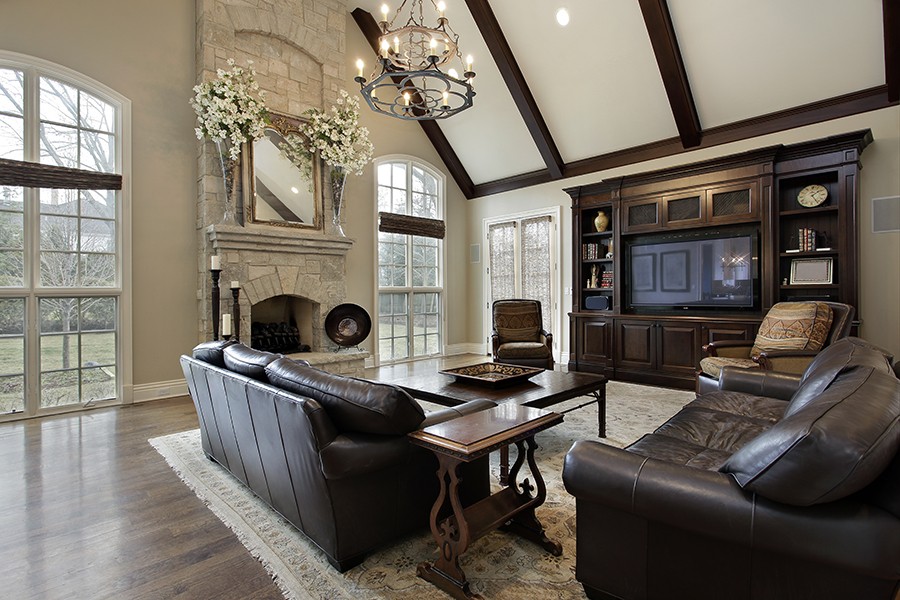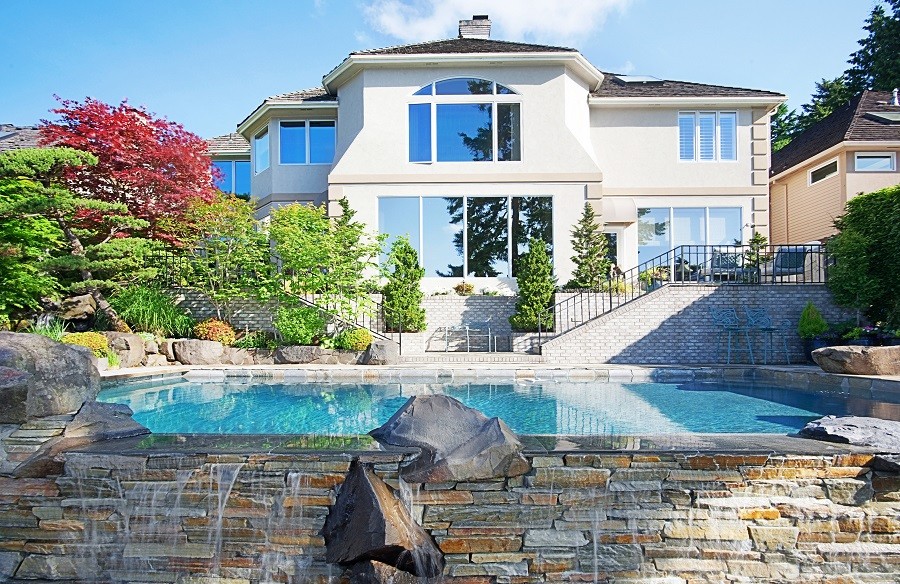A common misconception about motorized shades is that homeowners will be forced to choose from one of five generic patterns if they want their window treatments to be part of a smart home automation system. This couldn’t be further from the truth! Below, we outline the different possibilities to make motorized shades fit the style and décor of your Westlake, Texas home.
SEE ALSO: 3 Reasons to Invest in Motorized Shades for Your Home
Fabrics
The type of material used for motorized shades is entirely dependent on which room you’re planning on installing the window treatment. You wouldn’t have the same shades in a media room that you would have in a bedroom, for example. Here are some of the most common types of fabric to consider:
- Blackout: This type of fabric is ideal for home theaters, media rooms, or bedrooms because it completely blocks sunlight from entering through the windows. Particularly useful during Texas’ scorching summers, blackout shades also help to reduce solar heat gain.
- View Preservation: If you have a room with a gorgeous view, you obviously don’t want to hide it away behind curtains. By choosing a fabric style that allows you to see through it while closed, you get the benefits of reduced sunlight glare without compromising on your view.
- Thermal Management: You don’t have to go straight to blackout shades if you want to reduce solar heat gain. There are plenty of fabric types specifically engineered to have a high reflectance value, turning the sun’s heat away while still allowing some daylight into the room.
- Eco-Friendly Materials: For the environmentally conscious homeowner, choose from a strong selection of sustainable fabrics designed to keep your ecological footprint small.
Styles
- Roller: When you want your motorized shades to be a subtle addition to the room, roller shades are a good option. The shades are practically unnoticeable when raised, but still provide complete window coverage whenever you want it.
- Drapery: The perfect shading choice for bedrooms and formal living rooms, traditional drapery can make a big statement. The great thing about motorized drapery rods is that you can add your own draperies to the room for a truly customized design while also taking advantage of the automation technology. Of course, you can still go with drapery fabrics specifically designed for motorized use.
- Honeycomb: The unique design of honeycomb shades makes them easy to fold up tightly, and the air pockets that expand as the shades lower can actually help insulate your home from heat.
- Roman: Similar to the honeycomb style, Roman shades pull the fabric straight up and down. Roman shades offer more variety in pleat and fabric style, so you can find the perfect option for each room.
Patterns
Whether you want your shades to be one neutral color or the fashion statement in the room, there are plenty of patterns to choose from. DB Media Solutions can provide you with a comprehensive selection of patterns and work with you or your interior designer to decide on the best option for each room. Beyond the pattern of the fabric itself, you also have options for the color and material of the curtain rods, finials, and other hardware.
We’ve barely scratched the surface of the different options available for motorized shades, but the point is clear: whatever design or style you’re seeking for your home, we can supply it. To learn more about motorized shades or our other smart home automation technologies, contact us today.
Deprecated: Creation of dynamic property EasyBlogSocialButtonExternal::$post is deprecated in /home/dbmediapro/public_html/administrator/components/com_easyblog/includes/socialbuttons/adapters/external.php on line 42



